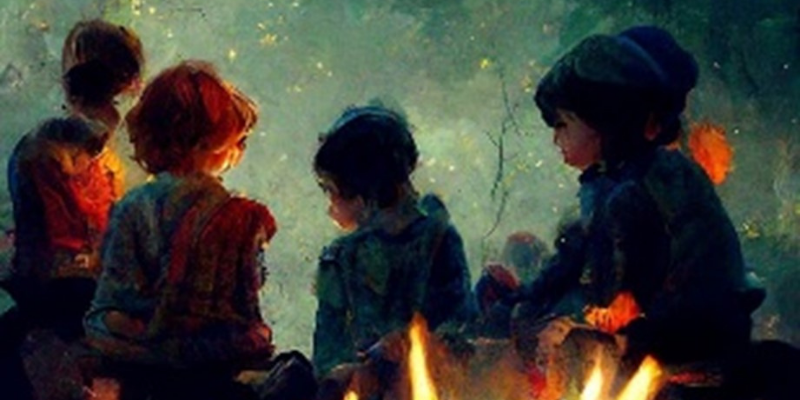When teaching or talking with other palliative care community specialists, I like to use the campfire analogy. When you sit too closely to a campfire, you can get burned, and when you are too far away you can seem cold and disengaged.
In the Goldilocks zone, we are sitting in the warm ring of engagement while still having boundaries and balance. Our relationships with patients, families, community and our own loved ones can be applied to this analogy.
This story is about a time when I was sitting too closely to the campfire. At the time of this patient and family interaction, I had just started working at UC Health on the inpatient team in the middle of the COVID pandemic. I was also preparing to file for divorce. As a result, I was showing up with my cup half full before even seeing patients.
The palliative care art therapist was working with a young mom who had terminal cancer and asked if I could help facilitate a discussion with her children, ages 5 and 7, to break the bad news that their mother was dying.*** I had met with the mom and her husband in the past but had not spent time with her daughters. We read the latest note in the chart, brought along crayons, paper, tissues and squeezy toys, and took a deep breath before entering the room.
When we arrived, the mom, her husband, and the two girls were all sitting on the bed. The boys were cuddling with their mom on the bed, and they were still in their pajamas from staying overnight with her in the hospital. The younger daughter seemed content to be near her mom, while mom played with her daughter’s hair. But the older daughter regarded us with trepidation. She seemed to have some awareness of what the hospital means for his mom. Dad was already getting tearful, and mom was trying to hold it together for her girls.
The art therapist and I took deep breaths and gave the girls clay to squeeze and the art supplies we brought. We asked what the children have heard about their mom’s illness and their worries. While hearing about their fears and worries, a feeling of devastation washed over me. I became tearful and felt hope and light had been sucked out of the room. Although I was able to continue talking with the family, my tears were evident behind my mask.
What flooded me emotionally and broke my heart was the intensity of the multiple layers of grief. These innocent children will grow up without their mother. She was going to miss their graduations, proms, weddings, and becoming a grandmother. The mom was robbed of the future she had envisioned. And the dad was about to become a widower, with all his grief, while filling the parenting gap that his wife would be leaving for their daughters.
This experience gave me pause because of my strong reaction and overidentifying with the young mom. I could not imagine, and maybe feared, having this same conversation with my own son who was 11 at the time. It was intolerable for me to think of separation from him, and although I had been working on grief and loss in therapy, it was a powerful reminder of my humanity and mortality. My worries about what life would look like after the divorce and having to be separated part time from Jacob as a result also intertwined with my grief for the family.
I also felt shame for not being able to “keep it together” in the consult. As a result I was not as effective as I wished I could be. On the other hand, I connected with the family on a deep level with their suffering. This interaction in palliative care reinforced on a visceral level how much grief I can carry in my work, and the importance of taking breaks for self-care. As I am writing this story, I still feel this family in my heart. I will always carry them with me. And I send out loving kindness to the universe to the widower and his daughters.
***the facts of the story were changed to protect anonymity
The article below explores work-related grief in palliative care:
“Once you open that door, it’s a floodgate”: Exploring work-related grief among community service workers providing care for structurally vulnerable populations at the end of life through participatory action research (sagepub.com)
Want to know more about our Palliative Care Education programs? Click below:
Interprofessional Palliative Care Certificate
MS-Palliative Care
Community Hospice and Palliative Medicine Fellowship



.png)